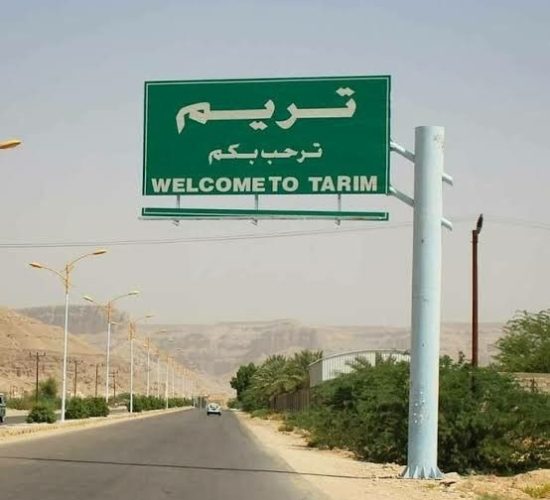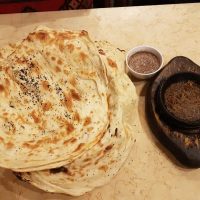Noru Razak
Real-World of Tarim, Yemen
Real-World of Tarim, Yemen
Introduction

Tarim, Hadramout, a historic town in Yemen, holds global fame for its abundance of renowned ulama’ throughout the centuries. It serves as a hub for Islamic learning and is home to descendants of the Prophet Muhammad. The city boasts palaces, mosques, and is the scholarly and juridical centre of the Hadhramaut Valley. Among its esteemed ulama’ is Habib Umar bin Muhammad bin Salim bin Hafiz, who established several schools, notably Dar-al Musthafa. In Tarim, daily routines revolve around religious practices, with prayers, Quranic studies, and cultural traditions being integral. The country is full of great-grandchildren of the prophet Muhammad such as descendants of Al-Attas, Al-Haddad, Assegaf, Al-Habsyi, Alaydrus, Al-Jufri, Syihab, Syahab and many others.
This article is dedicated to Lisanul Um students who will fly to Tarim soon, and someone who just got back from Tarim. Maybe this will offer illuminating insights, reshaping perspectives on this Yemeni gem. Prepare for an immersive encounter, understanding its rich heritage, spiritual practices, and vibrant culture.
Overview of Their Culture
In Tarim, establishing a friendly and familial atmosphere is paramount. They bond while visiting renowned priests and prophets’ tombs. The communal spirit when everyone eats together (talam), leaving no one behind. Embracing the nighttime energy, Tarim residents are more active at night than during the day, seeking spiritual connection and devotion in their special moments with the divine, making a lot of sunnah prayer like Tahajjud and Witr. In the third night stands out for its spiritual intensity. Mosques across Tarim city remain illuminated, fostering a sense of togetherness. Another thing about the culture there is that children are not encouraged to go to the market or public places other than mosque because it is said that they are building their identity. Technically, what they see and hear will be followed. Not forgetting about the women in Tarim, they are not allowed to go anywhere unless it is necessary, going to market. Now, you might think how can they congregational prayer and read the Quran? They perform it at home, to protect their dignity and image from Ajnabi.

Wedding

The wedding ceremony begins with the henna day, where men and women gather separately at the groom’s and bride’s houses. In the groom’s house, men dance in circles while a band performs sharh (dance) with two types called Qutni and Dehifah. In the bride’s house, women dance and sing, praising both families, but they cannot see the bride’s face until the groom’s first meeting. On harawah day, guests gather outside the groom’s house, and the groom gets washed and combed by the sabi (infant boy, lad: kid). Money is collected for the groom during this event. The bride is brought to the groom’s house by selected people called harawah. After supper, the bride is taken to her new home accompanied by rawakeb (bridesmaid) women. On Sabha day, people congratulate the couple, and women finally see the bride’s uncovered face. They sing, dance, and celebrate until late at night. The wedding ceremonies conclude on the Khatrah day with lunch at the bride’s house.
https://www.instagram.com/tv/CdcoCy1vkzq/?igshid=MzRlODBiNWFlZA==
Foods





Fahsa
Bint Asahn
Khameer
Saltah
Madfoon
Dance (Hajir Marawis)
Hajir Marawis, the most famous dance in Tarim, traces its origins to Kuwait and has a rich history spanning over 400 years. Its inception dates to scholars from Hadramaut, Yemen, who brought the dance to Tarim. In this captivating performance, 16 to 18 men take on roles as musicians, singers, and dancers. The name Hajir symbolizes the drum, while Marawis signifies the tambourine, both adorned with animal skin on each side, hence the name Hajir Marawis. The dance is accompanied by other musical instruments such as flutes and tambourines, enhancing the overall artistic experience. Beyond mere entertainment, Hajir Marawis holds a spiritual significance, evoking a profound love and reverence for God, the Creator of the universe, through the salutations and qasidah (poems of praise) that accompany the performance. This traditional dance unites the community in celebration i.e., marriage, aqiqah and khatan, while fostering a profound connection with their faith and cultural heritage.
Celebrations
During the sacred month of Ramadan, the people of Tarim embrace a profound commitment to spiritual growth, endeavouring to surpass previous years in worship. In contrast to Malaysia’s focus on fasting and nightly Tarawih prayers, Tarim’s celebrations diverge significantly. In Tarim, they engage in Madaih, poetic praises dedicated to the Prophet and profound literary recitations after Tarawih prayers. Unique customs are observed in every mosque, imparting distinctiveness to their practices. The terawih prayer in Tarim extends for two hours due to the lengthy readings, while in Malaysia, only a maximum of two pages is read. At Darul Mustofa, the esteemed Habib Umar leads the congregation as the imam, reciting two juz of the Quran from his memory, adding a remarkable touch to this spiritually enriching month.
During Ramadan, Tarim observes unique customs. Bukhoor, the devil’s detested fragrance, is avoided as it might nullify the fast. Other than that, blessings are shared by reading the Quran from house to house. to ensure that everyone is not walking under the scorching heat of the sun, prayers commence an hour later, allowing all to reach the mosque for congregational worship. After Maghrib, the Tasbih prayer is encouraged, fostering a deeper connection with the divine. These unique traditions highlight Tarim’s devotion and unity, enriching the holy month with spiritual significance and making Ramadan a truly captivating and blessed experience for its inhabitants. Other unique things that they are doing is they give each other things that are defined as return of capital. This is because they are taught to give charity without thinking that their money or property will run out.
The Eid al-Fitr celebration in Tarim contrasts with Malaysia’s tradition, where Malaysians indulge in feasting on the first day of Raya. However, in Tarim, a unique practice prevails – they fast for six consecutive days, reaping rewards akin to a year of fasting. During those days, the city remains quiet as people stay home, devoutly engaging in worship. On the eighth day, the subdued Hari Raya takes place, with modest but joyous house-to-house celebrations. This distinct approach reflects Tarim’s deep spiritual connection and reverence for the holy occasion.
References
https://www.youtube.com/watch?v=8oIHZLmWxD0&t=754s
https://www.youtube.com/watch?v=8oIHZLmWxD0&t=754s
https://www.youtube.com/watch?v=zpig8KJuHJ0&t=329s
https://ms.wikipedia.org/wiki/Habib_Umar_bin_Hafiz
https://en.wikipedia.org/wiki/Tarim,_Hadhramaut
https://kalselpos.com/2020/09/25/lestarikan-seni-budaya-islam-lewat-hajir-marawis/